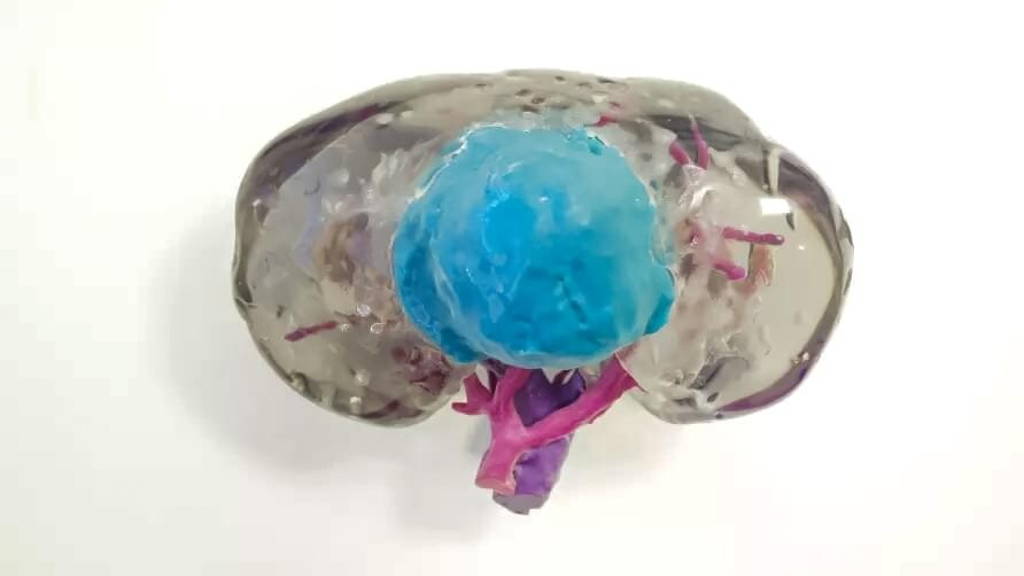Three-dimensional (3D) printing allows digital 3D models to be converted into physical ones with unprecedented accessibility. It has been hailed as a “disruptive technology” — a term used to describe advances that could change the status quo. The technology involves building 3D structures by depositing material layer upon layer to form a 3D object. This process is achieved via several ways, most commonly via fused deposition modelling (FDM), selective laser sintering and stereolithography.
According to a report from Allied Market Research, 3-D printing in health care is expected to be a $2.3 billion business by 2020. The technology proves to have many applications in the medical world. Jason Chuen, Director of Vascular Surgery at Austin Health and a Clinical Fellow at the University of Melbourne, and Dr Jasamine Coles-Black, a clinician at Austin Health and research engagement officer at the University of Melbourne, see so many opportunities, they felt it neccessary to sketch five areas where 3D printing will have the most impact. In the Medical Journal of Australia Mr Chuen and Coles-Black have published an article aimed at alerting medical professionals to the potential of 3D printing.
By using the model I can more easily assess that the stent is the right size and bends in exactly the right way when I deploy it.” His do-it-yourself approach has now grown into a 3D Medical Printing Laboratory at the hospital with help from the University of Melbourne’s Department of Mechanical Engineering. “At the moment 3D printing is at the cutting edge of medical research, but in the future the technology will be taken for granted by all of us in healthcare,” says Mr Chuen.
So what are the five areas described by Chuen en Coles-Black:
Read more about the research and the five keay area’s in this article on the University of Melbourne website.
According to a report from Allied Market Research, 3-D printing in health care is expected to be a $2.3 billion business by 2020. The technology proves to have many applications in the medical world. Jason Chuen, Director of Vascular Surgery at Austin Health and a Clinical Fellow at the University of Melbourne, and Dr Jasamine Coles-Black, a clinician at Austin Health and research engagement officer at the University of Melbourne, see so many opportunities, they felt it neccessary to sketch five areas where 3D printing will have the most impact. In the Medical Journal of Australia Mr Chuen and Coles-Black have published an article aimed at alerting medical professionals to the potential of 3D printing.
3D-printing will transform medicine
3D printing technology, surgeon Jason Chuen says, is going to transform medicine, whether it is patient-specific surgical models, custom-made prosthetics, personalised on-demand medicines, or even 3D printed human tissue. Chuen likes to practice on 3D models created from CT scans, ultrasounds and x-rays, for example before inserting and expanding a pen-sized stent into someone’s aorta. “By using the model I can more easily assess that the stent is the right size and bends in exactly the right way when I deploy it.” His do-it-yourself approach has now grown into a 3D Medical Printing Laboratory at the hospital with help from the University of Melbourne’s Department of Mechanical Engineering. “At the moment 3D printing is at the cutting edge of medical research, but in the future the technology will be taken for granted by all of us in healthcare,” says Mr Chuen.
So what are the five areas described by Chuen en Coles-Black:
- Bioprinting and Tissue Engineering – production of replacement tissues and organs
- Pharmacology – new delivery methods for drugs promise to improve compliance and make things easier and simpler for patients
- Surgical Rehearsal – preparation for complex surgeries can be enhanced significantly using quickly printed 3D models of relevant anatomy
- Customized Prostheses – highly detailed, accurately produced prosthetic devices that perfectly fit each individual user may end up revolutionizing the industry
- Distributed Production – areas currently poorly served by medical manufacturers and distributors may turn to producing their own devices locally
Read more about the research and the five keay area’s in this article on the University of Melbourne website.








